Root canal files
Root canal therapy helps to remove the dental infection and eliminate the bacterial cause. Every tooth has special anatomy, root shape, and canal. When the bacteria invade the tooth and contaminate the pulp the infectious procedure causes pain, swelling, or discomfort. Root canal treatment becomes inevitable and necessary for pain relief. There are numerous reasons for undergoing root canal therapy. The most common cause is pulp or peri radicular tissue infection, but due to prosthodontic rehabilitation, some teeth may require endodontic treatment. Various instruments are designed to carry out the therapy. The most important component in the root canal procedure is the use of endodontic files.
What are Endodontic Files?
Endodontic or root canal files are the special instrument that removes the infected dental pulp. It is made of different biocompatible materials. stainless steel or Ni-Ti is the most widely used dental material for endodontic files. The Ni-Ti files have springiness and regain their shape with little chance of breakage. However, the stainless-steel files can be used in curved and constricted canals. Preparing the canal in this manner not only facilitates chemical disinfection to an acceptable length but also provides a shape suited to obturation.
What types of endodontic files are available?
There are various types of endodontic files used in the root canal.
- Endodontic files K files
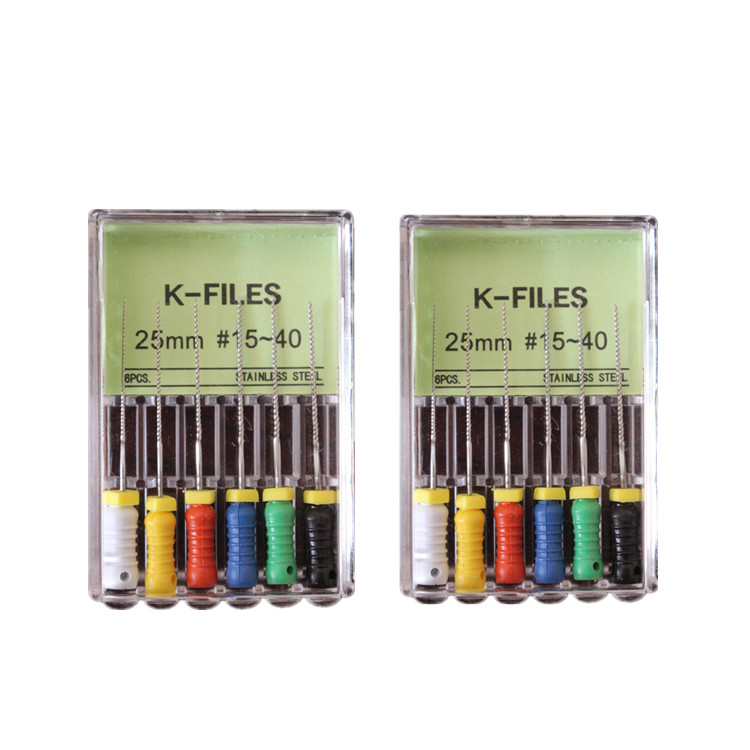
K files are the most commonly used hand files. The hand files are used to remove the dental pulp with manual control. K-files are more flexible and have sharper blades with a non-cutting tip than standard files (blind tip). The files perform the following function in root canal therapy;
- It is used for canal enlargement after debridement
- It also aids in the removal of dentinal shaving fragments from root-canal walls
- K files can negotiate the canal ad used in, shaping, and recapitulation of root-canal systems
The k files have a specific color-coding system that is necessary for identification. They evolved from square to triangular and rhomboidal in cross-section over time, giving way to the K-Flex and Flex-R files. K-files were advanced to their full working length, rotated 1/4 to 1/2 turn clockwise, and withdrawn while pressed against each wall. The procedure is repeated until the canal has been sufficiently enlarged to accommodate the next size instrument. The lack of stiffness in negotiating curved and calcified canals is the main design feature.
- Rotary file system
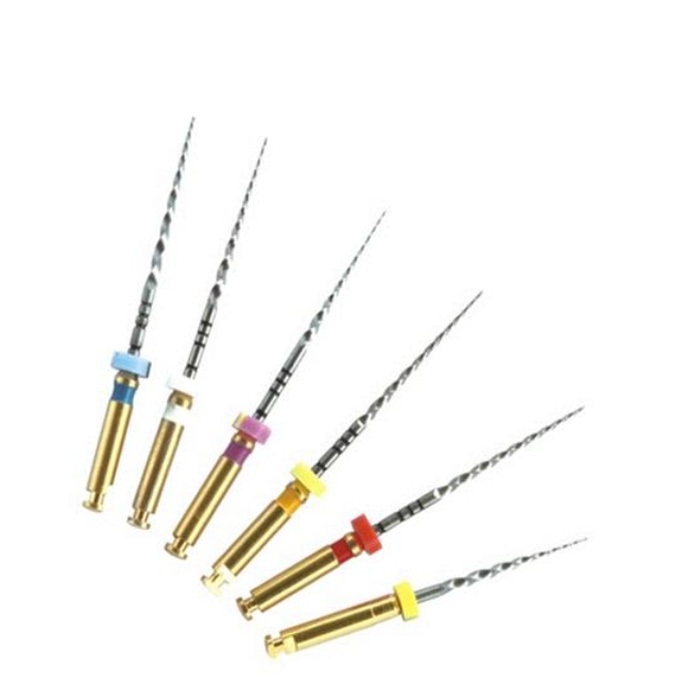
With the emergence of rotary files, endodontic treatments became less time-consuming, more effective, and thus more comfortable for both patients and dentists. The end motor rotates the files mechanically for cleaning and debridement of the canal. The Endo motor has adjustable torque and rotational speed. Another advantage of using rotary files is that the number of instruments used for the entire procedure is reduced to 3-5, resulting in less in-chair time. They are now made entirely of NiTi alloy, which makes them safe to use with little risk of fracture or instrument separation during manipulation.
- Reciprocating file system
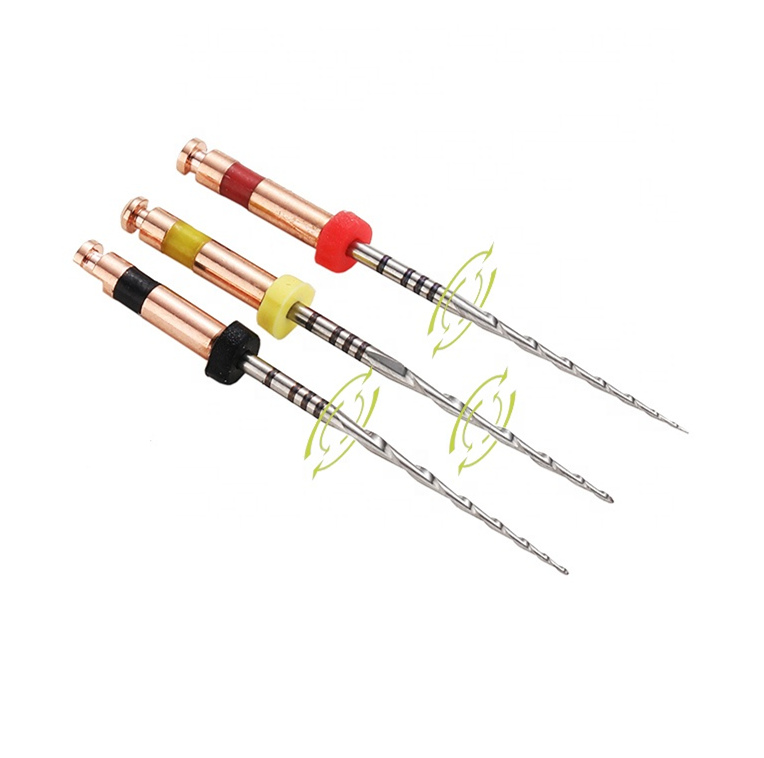
The reciprocating wave one files in innovation in rotary endodontics. The files have asymmetric rotational movement and can continuously change their direction during canal preparation. The reciprocating files have a large turning angle in the cutting direction with a smaller angle in the reverse direction that helps to progress along the canal path concerning the root’s anatomy. The files come in three standard lengths: 21, 25, and 31 mm, with a short 11 mm handle for easier access to the back teeth. Furthermore, it cuts duct preparation time by 23% and reduces clinical fatigue.
- self-adjusting files in endodontics
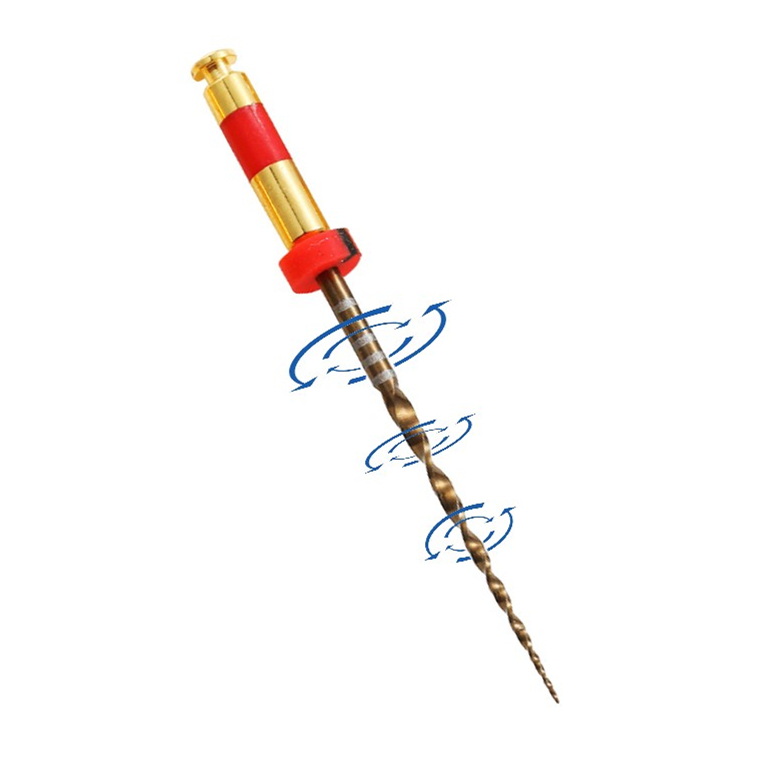
The Self-adjusting files are hollow and intended as a thin cylindrical nickel-titanium lattice that corresponds to the root canal cross-section. Throughout the procedure, a single file system is used. The initial pathway prepares with the 20k hand file system and after self-adjusting files prepare the canal within and out motion. The arising circumferential pressure allows the file’s abrasive surface to progressively eliminate a thin uniform hard-tissue layer from the entire root canal surface, resulting in a canal with a similar cross-section but larger dimensions.
- Retreatment rotary files
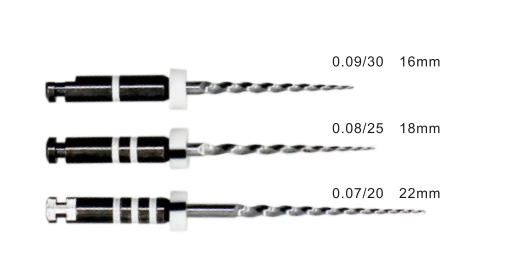
retreatment files are intended to be used sequentially to remove filling materials like gutta-percha, carrier-based obturators, and paste fillers. Developed to be used sequentially to remove filling materials. Three easily identifiable files are designed to meet the various needs of un-filling the canal before reshaping. The D1 file contains a working tip that aids in initial penetration. D2 files remove the material from the middle of the canal. D3 removes the remaining gutta from the canal.
Conclusion
The selection of suitable files is very essential for successful therapy. however, this also depends heavily on the endodontist’s methodology, as some are more conservative than others. Many endodontists alternate and combine files.
-
 Speed 16:1 Endodontic Handpiece$59.00 – $282.00
Speed 16:1 Endodontic Handpiece$59.00 – $282.00 -
Product on sale
 U File Tips$4.19
U File Tips$4.19 -
Product on sale
 Reciprocating Endodontic File$22.00
Reciprocating Endodontic File$22.00 -
Product on sale
 Rotary Files Wave One Gold System$18.00
Rotary Files Wave One Gold System$18.00 -
 Portable Brushless Micromotor Dentist$259.00 – $539.00
Portable Brushless Micromotor Dentist$259.00 – $539.00 -
 4:1 Contra-angle Hand piece$59.00 – $219.00
4:1 Contra-angle Hand piece$59.00 – $219.00 -
 Root canal Gutta percha Points$4.88
Root canal Gutta percha Points$4.88 -
 Root Canal Paper Points Color-Coded$4.88
Root Canal Paper Points Color-Coded$4.88 -
 Gutta Percha Points Endodontic Pro Tapers$6.25
Gutta Percha Points Endodontic Pro Tapers$6.25 -
 Endodontic Pro Tapers Paper Points$6.25
Endodontic Pro Tapers Paper Points$6.25 -
 Protaper Blue Files Endodontics$12.90
Protaper Blue Files Endodontics$12.90 -
Product on sale
 Dental Niti D File$8.88
Dental Niti D File$8.88 -
 Peeso Reamers$7.90
Peeso Reamers$7.90 -
 Dental Gates Drill$7.90
Dental Gates Drill$7.90 -
 Zekrya Endo Z Safe Carbide Burs Dental$8.00
Zekrya Endo Z Safe Carbide Burs Dental$8.00 -
 Dental Headstroem Files$1.18
Dental Headstroem Files$1.18 -
 Endo Dental K File$1.15
Endo Dental K File$1.15 -
 Dental K Reamer Files$1.19
Dental K Reamer Files$1.19 -
 Dental Rotary Files$10.64 – $12.64
Dental Rotary Files$10.64 – $12.64 -
 Dental Protaper Files$12.14
Dental Protaper Files$12.14
